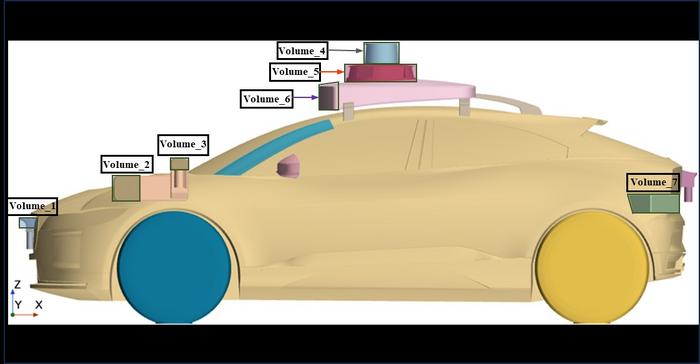Autonomous vehicles (AVs) have captivated the transportation technology sector with their potential to redefine mobility. Rapid advancements in information technology and artificial intelligence have propelled these vehicles toward practical applications within logistics delivery and low-speed public transportation. However, while much focus has been directed towards enhancing safety through sophisticated control algorithms, there remains a critical aspect overshadowed by these discussions: aerodynamic efficiency. Investigating this facet is key to overcoming existing challenges regarding energy consumption and driving range for these vehicles.
A central problem that has persisted in the evolution of AV technology is related to the aerodynamic drag, especially due to the externally mounted sensors required for their operation. These sensors, including cameras and light detection and ranging (LiDAR) systems, while indispensable for the vehicle’s operational functionality, inadvertently contribute to increased aerodynamic drag. This increase is critical, as the influence of drag can gradually inhibit the vehicle’s capability to achieve the acceleration benchmarks set by traditional vehicles.
To address these challenges, a team of researchers from Wuhan University of Technology in China has embarked on a groundbreaking study, aimed meticulously at boosting the aerodynamic performance of AVs. Their latest contribution, published in the journal Physics of Fluids, emphasizes the importance of understanding and optimizing the interactions between various sensor placements and geometries that contribute to aerodynamic performance. The insights gathered from this research can direct future design considerations, leading to more efficient AVs capable of operating effectively while minimizing energy consumption.
In a series of simulations, the research team compared the baseline models of AVs with their optimized counterparts. The results were promising, indicating a 3.44% reduction in total aerodynamic drag following the design enhancements. More impressively, simulations revealed that the aerodynamic drag coefficient for the optimized design dropped by 5.99%. These numerical insights have been complemented by wind tunnel experiments, providing validation to the computational findings and demonstrating real-world applicability.
Additionally, the study observed significant improvements in the airflow behavior around the vehicles. Specifically, turbulence levels around the sensors were significantly reduced, resulting in a more stable and favorable pressure distribution around the vehicle’s rear. This aspect of vehicle dynamics is crucial, as efficiency in airflow directly correlates to performance metrics such as stability, handling, and energy conservation.
The intricacies of aerodynamic interactions and their implications for the design of autonomous vehicles illuminate the need for interdisciplinary collaborations. In the future, integrating insights from fluid dynamics, engineering, and sensor technology will be instrumental in crafting vehicles that not only excel in operational efficiency but also adhere to environmental sustainability. The study serves as a prototype for future ventures where academic research directly intersects with practical engineering challenges.
These findings set a compelling precedent for the ongoing evolution of autonomous vehicle technology. As companies and researchers continue to enhance their designs and operational capabilities, insights such as those gathered from this study could serve the dual purpose of heightening performance while addressing the pressing issues of sustainability.
In closing, understanding and optimizing the aerodynamic properties of autonomous vehicles is no longer just a theoretical pursuit but a necessity for practical implementation. The research from Wuhan University of Technology, highlighting the importance of sensor shape and position, showcases a significant stride towards realizing the full potential of autonomous driving. Such advancements not only reaffirm the prowess of scientific inquiry in solving modern challenges but also pave the way for a future where transportation becomes efficient, economical, and environmentally conscious.
This remarkable contribution to the field illustrates the complex interplay between technology, design, and natural forces. As the quest for the ultimate autonomous vehicle continues, it will be exciting to watch how these principles apply towards realizing a transportation system that is both efficient and aligned with the demands of future mobility.
Subject of Research: Aerodynamic performance of autonomous vehicles and the influence of external sensors on drag.
Article Title: Numerical and experimental investigations of the aerodynamic drag characteristics and reduction of an autonomous vehicle.
News Publication Date: 7-Jan-2025.
Web References: https://doi.org/10.1063/5.0242941
References: The research article as mentioned above will be available for public access upon publication.
Image Credits: Credit to Yiping Wang.
Keywords
Autonomous vehicles, Aerodynamics, Sensors, Fluid dynamics, Energy efficiency.





